Five Reasons to Own a Laserdisc Player in 2018
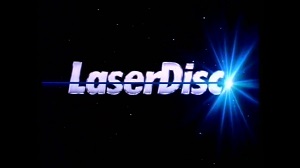
Laserdisc has never been more than a footnote in home video history, especially in the US where it never got past the single digits in terms of market penetration percentage. Even in Japan, where Laserdisc enjoyed its highest popularity and discs were still being pressed into the 21st century, its adoption rate never exceeded 10%. The reasons for this are myriad and could be the basis for another article all its own, but if you're interested enough to wonder and impatient enough that you won't wait for my lazy butt to write it, then I highly recommend checking out the Technology Connections channel on YouTube. He put together a brilliant four-part, roughly 90-minute documentary on LaserDisc that explains everything: what it was and how it worked, its advantages and disadvantages when compared to the competition, why it never caught on except among a small segment of home theater buffs, and what eventually killed it (spoiler alert: we could put DVD on trial for murder and easily obtain a guilty verdict).
But I'm not here to worry about those details. I'm here to talk about why, in the world of instant-access streaming media, the complete domination of DVD as a home video format, the bulkiness and storage space requirements of both the player and the media, and the availability of high-definition formats like Blu-Ray, anyone in this day and age would even consider picking up a player outside of sheer curiosity value. Turns out there are a few reasons to own and enjoy this dead format in 2018, and 'hipster cred' isn't one of them.
You Can't Always Get What You Want
Laserdisc's low market penetration did have a few benefits in that the people who bought into Laserdisc bought into it whole-heartedly for precisely the reasons the average consumer did not. With small television sets, no home theater setup or stereo output at best, and standard-quality speakers, the differences in video and audio quality between VHS and Laserdisc were difficult if not impossible to detect. But when you moved into the realm of the audiophiles, with their digital surround systems and lust for un-tampered and uncompressed sound quality, the difference between a properly-mastered Laserdisc soundtrack and the weak stereo track encoded on magnetic tape are glaringly obvious. And while it might seem difficult to believe today in a world of Dolby Digital 7.2 surround and digital audio, there are films out there which were mastered better for Laserdisc than they were for their DVD release.
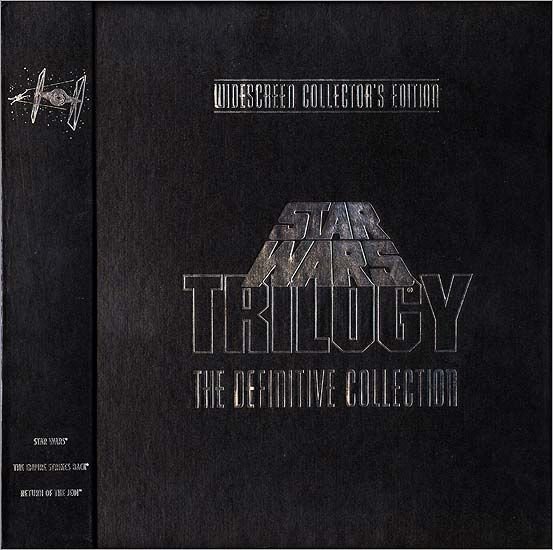
This 1993 release right here might be enough to get readers to plunk down for a player.
"But Michael, you scruffy-looking nerf herder, they already released DVD versions of the original, unaltered trilogy back in 2006! Quit huffing Bantha poodoo."
Yeah, yeah, don't send me to the spice mines of Kessel just yet. Assuming you own those DVDs, go ahead and pull 'em out and take a look at what you got for your money: the basic films with a standard two-channel Stereo Surround mix, thrown on a second disc as "bonus feature" to the Special Edition remastered work featured on disc one. Gee, thanks LucasFilm Ltd.
How about those Laserdiscs though? There's no denying, especially on a high-def set, the picture quality on the DVDs is better (DVD resolution is higher than Laserdisc resolution, after all). But if you can trade the loss of a few scanlines and the need to flip discs every 30 minutes (or every 60 if you have a player that can do both sides), the Laserdisc is going to blow you away. The audio was THX remastered for the full uncompressed surround sound experience, not the piddly little 2-channel stereo mix from the DVD. Every film has audio commentary and supplementary materials as well, including interviews with not only George Lucas but Ben Burtt, Dennis Murren, Frank Oz, Ralph McQuarrie, and Ken Ralston. The original theatrical trailers for all three films are included in the package, and along with them are literally hundreds of storyboards, artwork, and behind-the-scenes photos. You even get the silly music video for "Lapti Nek" they created for Return of the Jedi. Granted most of the bonuses are available on the internet nowadays, but in the YouTube-less wastes of 1993, this was a deal of planet-destroying proportions.
Outside of fan edits circulating on torrent sites, if you want to own the closest thing to the original theatrical experience for the original trilogy from an official release, this Laserdisc set is the way to go.
If you already have more versions of Star Wars than you have arms to hold them, then keep in mind the Criterion Collection started its life on Laserdisc long before DVD was a thing, and there are a number of movies that to this day are missing some of the features from their DVD releases that made the Laserdisc versions so important. David Fincher's Se7en, for instance, varies widely in quality of print transfer thanks to the silver emulsification process the theatrical film prints were run through, and many subsequent releases of the movie are color-corrected or contrast-boosted to hell, resulting in a difference between them and Fincher's original vision for the movie. The Criterion Laserdisc for Se7en, however, is a beautiful print that retains the look and feel of the film and includes a number of special features unique to its release, including that beautiful uncompressed audiophile soundtrack. Even the Criterion DVD release of Se7en lacks some of the Laserdisc's bonuses. For serious Fincher disciples, 'disc is the way to go.
You Talkin' To Me? You Talkin' To Me?
We take things like widescreen transfers and audio commentary tracks for granted today, but those features weren't born with the DVD format, they migrated there from Laserdiscs. The late 20th century saw an uptick in films receiving Widescreen releases on VHS and DVD once moviegoers realized the pan-and-scan format was sometimes costing them the ability to see literally half the cinematic display, but Laserdisc had been doing letterbox transfers for years. Using Star Wars as our go-to example, North American viewers couldn't pick up a Widescreen version of the films to play on VCRs until 1992, and it wasn't in widespread circulation until the subsequent 1995 release, but Laserdisc owners had been enjoying the letterboxed films since 1986. While it's true not every film released on Laserdisc was a widescreen transfer, enough important cinematic milestones were that DVD and Blu-Ray continue the tradition to this day, where pan-and-scan and full-screen versions are now seen as inferior to the director's original visions.
Then there's the commentary track. Laserdisc pioneered this since its discs could include audio on both digital and analog channels, instantly swappable at the touch of a button from one's remote. The only way VHS could replicate this was to package two tapes of the same film, one with the standard soundtrack and one with the commentary, and since that would have been confusing (not to mention expensive), it's no shock this never happened.
Surprisingly, there were films released on Laserdisc that featured audio commentary that for whatever reason dropped this feature from the subsequent DVD release.
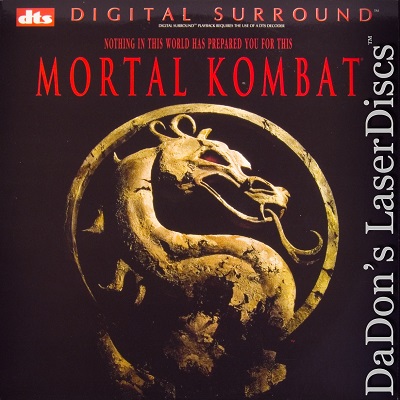
Mortal Kombat is the best video game to film adaptation of all time, and if you disagree, I'll contribute to the GoFundMe to cure your rectalcephaly. While there's no denying the DVD is better in both video and sound quality, if you want the commentary by producer Lawrence Kasnoff and visual effects supervisor Alison Savitch (who won an Oscar for work on Terminator 2: Judgement Day, so you might want to listen up), best make a trip to eBay. This is only one example, but it's the strangest in my opinion, since the Mortal Kombat DVD isn't exactly overflowing with special features and it couldn't have been that hard or expensive to add this track during the mastering process since it had already been recorded.
It wasn't the only one. Disney's Tron, for instance, had commentary recorded for its 1995 Disney Archive Collection Laserdisc release that was unavailable anywhere else until the 20th Anniversary DVD release several years later, and no US director so heartily embraced the Laserdisc format as James Cameron, with his Special Edition releases of films like The Abyss, Aliens, and Terminator 2: Judgement Day foreshadowing what we could expect once DVD got off the ground. Today there's no reason to own the Laserdisc versions of any of these movies since the DVDs offer everything in the package including superior picture and sound, but they're still beautiful to look at with their gorgeous, full-color, record-sleeve-sized artwork, and if you already have a player, they're awesome coffee table pieces in their own right.
Sorry, We Don't Have That One In Stock
What if I told you there are films available on Laserdisc or VHS that you can't find on Blu-Ray or DVD? That seems ridiculous, right? How and why would a studio which took the time to make one home video edition then not bother with updating it later? There are a number of reasons, but chief among them is that nobody knows who actually owns the rights to a particular film. This is why you can find 1984's Return of Godzilla available on Blu-Ray and DVD for North American release, but if you want the New World Pictures version dubbed in English and released in the US as Godzilla 1985 with all the Raymond Burr and Dr Pepper product placement your heart desires, you need to dig out your VCR. Godzilla 1985 never received a Laserdisc release, making it a poor example for this article, so let's talk about something that did instead.
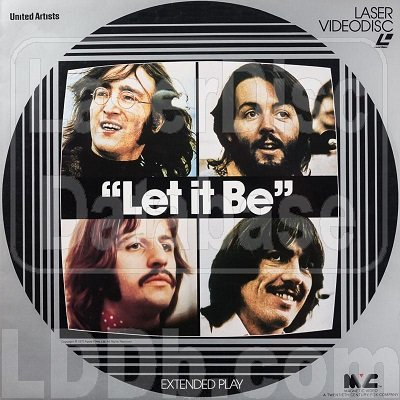
Let It Be is infamous in Beatles fandom. Originally intended as a behind-the-scenes look at the Fab Four, this 1970 documentary inadvertently wound up chronicling the group's final days. Much of the footage featuring arguments and fall-outs, including George Harrison walking out and the discussion of his possible replacement with Eric Clapton, was cut from the film's final release, but it's an uncomfortable watch with the benefit of hindsight, knowing what was on the horizon even as they play their impromptu gig at the end. While it's available on VHS, the Laserdisc boasts both better image quality and higher audio fidelity, both of which are important to any Beatlemaniac worth his vinyl collection. There were talks of an eventual DVD release, but it was scrapped for reasons known only to Paul McCartney and Ringo Starr. Just be aware copies of this disc routinely sell for $250 or more on the second-hand market, so unless you're dead-set on owning one of literally everything the Beatles ever put out, you're better off actually making a car payment than ordering this one off eBay.
For the non-Beatles fans who are still looking for reasons to pick up a Laserdisc player, it's the best way to see films like Michael Mann's The Keep (based loosely on the F. Paul Wilson novel, featuring a soundtrack by Tangerine Dream), Wayne Coe's Grim Prarie Tales (a western/horror anthology mashup that was Coe's directorial debut and directorial swan song all in one), and Disney's Song of the South (which is likely to stay in the Vault for the rest of forever for reasons obvious to anyone who's seen it).
Region Codes? What Are Those?
While it might not seem like it considering it's read with a laser, the Laserdisc is actually an analog format (though it can read digital audio information), and unlike DVDs, Laserdiscs are not region-locked. This means if you're looking for international releases of certain films, either because you're curious about them, or because there are obvious differences from your localized release, as long as you pay attention to video standards like PAL vs. NTSC, a Laserdisc manufactured in one area of the world will play in any other area of the world using the same video format. For a long time, this was one of the only ways you could see legit commercial releases of the original Japanese Godzilla movies (see the Return of Godzilla example cited above).
Other reasons to import a laserdisc can have nothing to do with the film itself, but rather the packaging. Consider the Japanese release of A.D. Police vs. its US counterpart. Here's the Japanese cover of Volume 1 (incomplete, since the whole thing won't fit on my scanner, but it's the best I could do):
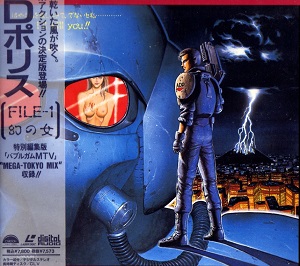
This image also shows up on the US packaging...on the back of the sleeve, much smaller, and slightly altered. See if you can spot the difference:
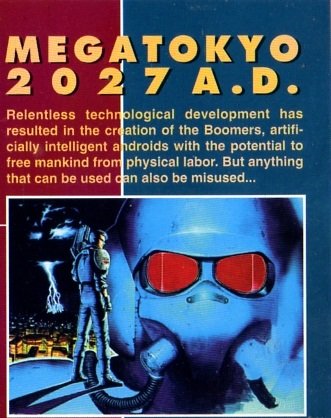
But we aren't done yet. Here's the cover of the US laserdisc release, which uses some of the original Japanese promotional artwork for its front (again, scanned from my personal copy, so it's not perfect but you'll get the idea):
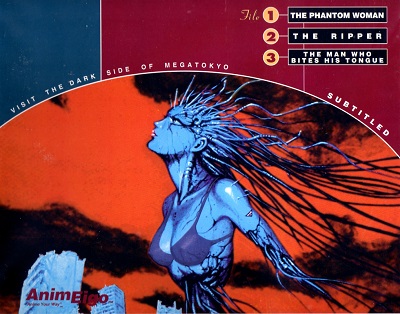
Here, by contrast and courtesy of AnimEigo's Tumblr, is the original image:
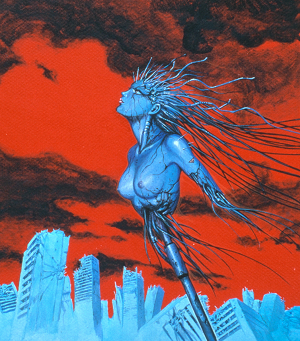
Now, is this reason enough to invest in a player and start going nuts on the auction sites? Of course not. Importing the Japanese Laserdiscs won't do you a lick of good if you can't understand Japanese since there are no English subtitles or dubbing, but assuming you're a big enough fan of either A.D. Police or Bubblegum Crisis like I am (because nerd!), you might want to be able to showcase the original side-by-side with its localized edits, and even watch the Japanese editions to see if anything else got censored, changed, or glossed over. I'll leave that as an exercise for the reader who enjoys homework with their Steemit posts--I can't reveal everything, after all! ^_~
Nowadays with Blu-Ray largely eschewing region coding and the Internet available to easily point out differences like this, hassle-free importing isn't as much of a perk, but it's still nice to know you can pick up the Japanese laserdisc of Star Wars Episode I: The Phantom Menace and watch it in the privacy of your own home. I'll still worry about you, because who in their right mind drops upwards of $50 on The Phantom Menace, but you do you, Steem-izen.
You do you.
There's Perfection In Them There Flaws
Cinephiles will rightly point out that Laserdiscs offer a lower video quality than both DVD and Blu-Ray...but is that always a good thing? Remember, directors shooting in high-def digital formats suitable for 720p or 1080p or even 4k resolution is a relatively recent innovation given cinema's longevity. Taking films originally shot on film stock and upscaling them without also going through a lengthy clean-up process on a frame-by-frame basis isn't financially feasible for most older movies, and with that crystal clarity comes...some disappointments.
Directors shot films in the old days with the knowledge that the quality of film was such that defects could often be muddied into the background: the cameras might pick them up, but the displays weren't clear enough to showcase them. This is especially true of animated features produced in the last couple decades of the 20th century, where studios may have started adopting computers but still relied on hand-drawn artwork to tell the story. While high-def transfers of these movies can be enjoyable to watch if done right, there's also the case to be made that the directors' visions for those films could be compromised when you can see everything clearly including the flaws.
This is more of a personal reason as opposed to an objective one, but I'm of the opinion there's no better way to experience 20th century anime like Bubblegum Crisis and Appleseed than on Laserdisc. For one thing, most OVAs are short enough that they can fit on a single disc using the CAV format. CAV provides 30 minutes of video per side (the alternative CLV offers up 60 minutes), but the benefit is that each frame of the picture is encoded in a single pass around the disc, which makes features like a clean pause display and on-screen fast-forwarding or rewind possible. The 1986 Japanese Special Collection release of the Star Wars trilogy, for instance, was highly sought after in some circles for a long time because the discs are all CAV format, suitable for frame-by-frame viewing if desired.
The DVD versions of these movies clean them up, but by doing so it often alters the chroma signals (and thus the brightness and color values) the directors achieved for their original releases. This can bring out areas of the film meant to be obscured, and offer up a completely different experience. In addition, many anime from this generation used very talented voice actors and actresses in their productions. This was the case with Bubblegum Crisis, Devil Hunter Yohko, and a slew of other films produced around this time. The soundtrack, and specifically the songs themselves, are integral parts of the experience, and when it comes to Laserdisc's uncompressed and beautifully clean audio formats, there's no competition.
Early versions of DVDs based on these anime were often very quick-and-dirty affairs, with the transfers looking like they were taken from a VHS source, but popular anime series like Urotsukidoji: Legend of the Overfiend received "Perfect Collection" releases on Laserdisc that offered up picture and sound unrivaled on the cheaper, less-refined DVD pressings of the 90's. These transfers still look and sound phenomenal today, even when viewed on HD televisions, and for my money there's literally no better way to view anime produced before, say, 1999 than on Laserdisc. This is personal nostalgia talking here, so feel free to disagree all you like.
So, Laserdisc. Is it better/superior to DVD or Blu-Ray? No sane person would argue so. From the portability and ease-of-use aspects alone, these formats win the day. I can't throw a Laserdisc into my PC and run it in the background like I can with a DVD, for instance.
But it's not worthless. It's not solely the domain of hipsters or those who refuse to acknowledge the superiority of the formats which came after. Despite all our technological advances, higher bit-rates, better video codecs, and streaming-on-the-go services, there are still compelling reasons to enjoy and collect Laserdiscs. It's not a cheap hobby, and it's not one to get into without doing your research--a good player is literally the difference between enjoying and tolerating the format--but even two decades after the last US pressing plant for Laserdiscs closed its doors, you can still find evangelists for this obscure, but not obsolete, hobby.
I think I'm gonna have to disagree with you, man. Mortal Kombat is not the best video game movie of all time. The Super Mario Bros is clearly hands down the winner in that category, with Mortal Kombat being a close second.
Also, you should check out my most recent post (Specifically the bottom section of it :P)
Point me towards your GoFundMe page then. There is a cure, and I'll help get you there. ;)
You just planted 1.40 tree(s)!
Thanks to @modernzorker
We have planted already 5362.45 trees
out of 1,000,000
Let's save and restore Abongphen Highland Forest
in Cameroonian village Kedjom-Keku!
Plant trees with @treeplanter and get paid for it!
My Steem Power = 18670.04
Thanks a lot!
@martin.mikes coordinator of @kedjom-keku
This post has received a 7.09 % upvote from @booster thanks to: @modernzorker.